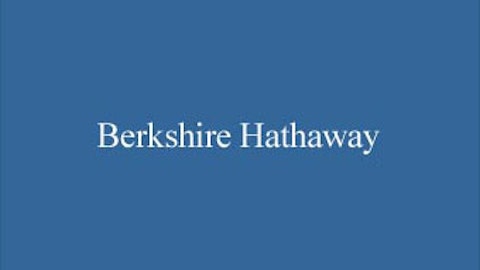For all that is written on the topic, the key to beating the market can be boiled down to a single concept: variant perception. In order to earn a return that is different from the market average, you need to do different things, based on views that are different from the consensus. In that spirit, here are some of the best contrarian articles I read recently:
Buffett’s devil’s advocate
The annual Berkshire Hathaway Inc. (NYSE:BRK.B) shareholders’ meeting is somewhere between corporate event and religious pilgrimage, where members of the cult of value show their unwavering devotion to the Oracle of Omaha, Warren Buffett. However, this year Buffett is mixing it up. From Berkshire’s recently released annual letter (link opens PDF):
Finally — to spice things up — we would like to add to the panel a credentialed bear on Berkshire Hathaway Inc. (NYSE:BRK.B), preferably one who is short the stock. Not yet having a bear identified, we would like to hear from applicants. The only requirement is that you be an investment professional and negative on Berkshire Hathaway Inc. (NYSE:BRK.B).
Media-friendly hedge fund manager Doug Kass has already stepped up to the plate and will be this year’s “credentialed bear.” To get an idea of the challenges Kass might raise, head over to Michael Santoli’s “Warren Buffett and the 3 Bearish Questions.” Here’s one of Santoli’s questions:
How can that premium valuation be justified, now and in the future, given three facts: As you have frequently conceded, you will not be here to run things forever; at Berkshire Hathaway Inc. (NYSE:BRK.B)‘s present enormous size, it would appear very unlikely the past value creation pace can be approximated; and there are huge latent tax liabilities on the balance sheet from your tremendously appreciated equity positions?
The Dow: What’s all the fuss about?
To great fanfare, the Dow Jones Industrial Average 2 Minute (Dow Jones Indices:.DJI) set a new all-time (nominal) high last week, surpassing the mark it had established in Oct. 2007. Unfortunately, the level of coverage this milestone received is out of all proportion with the Dow’s financial and economic significance. The Financial Times‘ John Authers rightly argues that the Dow should be consigned to history [registration may be required]:
By robust measures such as the S&P 500 , US equity markets are almost back to their highs of 2007, and could get there any day. This is a remarkably swift recovery from the 2007-09 implosion and a remarkable disconnect, both with the rest of the world and with most perceptions of the health of the US economy. How did this happen?
The Dow does not help answer this question. But as market perceptions can be self-fulfilling, attention to the Dow may have egged on the animal spirits that are pushing US stocks higher and fuelled that underlying disconnect. It really would be best if everyone could get used to ignoring the Dow.
If it ain’t broke, don’t VIX it
I’m fascinated by the VIX index and its potential as a contrarian indicator, but I’ll be the first to admit that using it is not straightforward. The VIX is derived from option prices and reflects investors’ expectations for short-term volatility in the S&P 500. The notion that low VIX values may reflect investor complacency, while high values indicate panic, is the basis for its contrarian appeal. In Letting the VIX tell us when to get out, Mark Hulberg crunched some of the numbers and found: “There are only minor differences between how the market proceeds to perform when the VIX is above its recent moving averages and when it’s below. And none of those differences is significant at the 95% confidence level”
I have some problems with Hulbert’s methodology: As he himself concludes, “None of this is to suggest that there aren’t other ways in which the VIX might be used as part of a profitable market-timing strategy.” Still, the article does highlight the challenge that specifying such a strategy represents.
Watch the “Greedometer”
Speaking of the VIX and contrarian indicators, the excellent Brett Arends of MarketWatch is concerned that there is danger as the stock market “Greedometer” flashes red:
There are nine indicators you need to watch. Just nine.
They range from the Volatility Index or “VIX,” a measure in the options market, to the Weekly Leading Index (WLI) of the Economic Cycle Research Institute (ECRI), to the amount of stock that insiders are dumping on the market. He put them all together in a doomsday machine he calls “the Greedometer.” It tells you just how dangerously complacent and carefree the market has become at any moment.
These Greedometer indicators flashed red in early September 2000. If you read the signs — as some of my wiser sources did — you got out before the crash and saved half your money. They flashed red again in May of 2007. And, again, if your read the signs you got out before the big collapse. They flashed red again in April 2011, just before the market fell another 20%.
Let’s cut to the case. The Greedometer is flashing red again.
Bright red. Last week it was up to 7900. The maximum possible reading is 8000.
Enjoy your week, contrarian Fools.
The article Top 4 Contrarian Reads originally appeared on Fool.com and is written by Alex Dumortier, CFA.
Fool contributor Alex Dumortier, CFA has no position in any stocks mentioned; you can follow him on LinkedIn. The Motley Fool recommends Berkshire Hathaway. The Motley Fool owns shares of Berkshire Hathaway.
Copyright © 1995 – 2013 The Motley Fool, LLC. All rights reserved. The Motley Fool has a disclosure policy.






